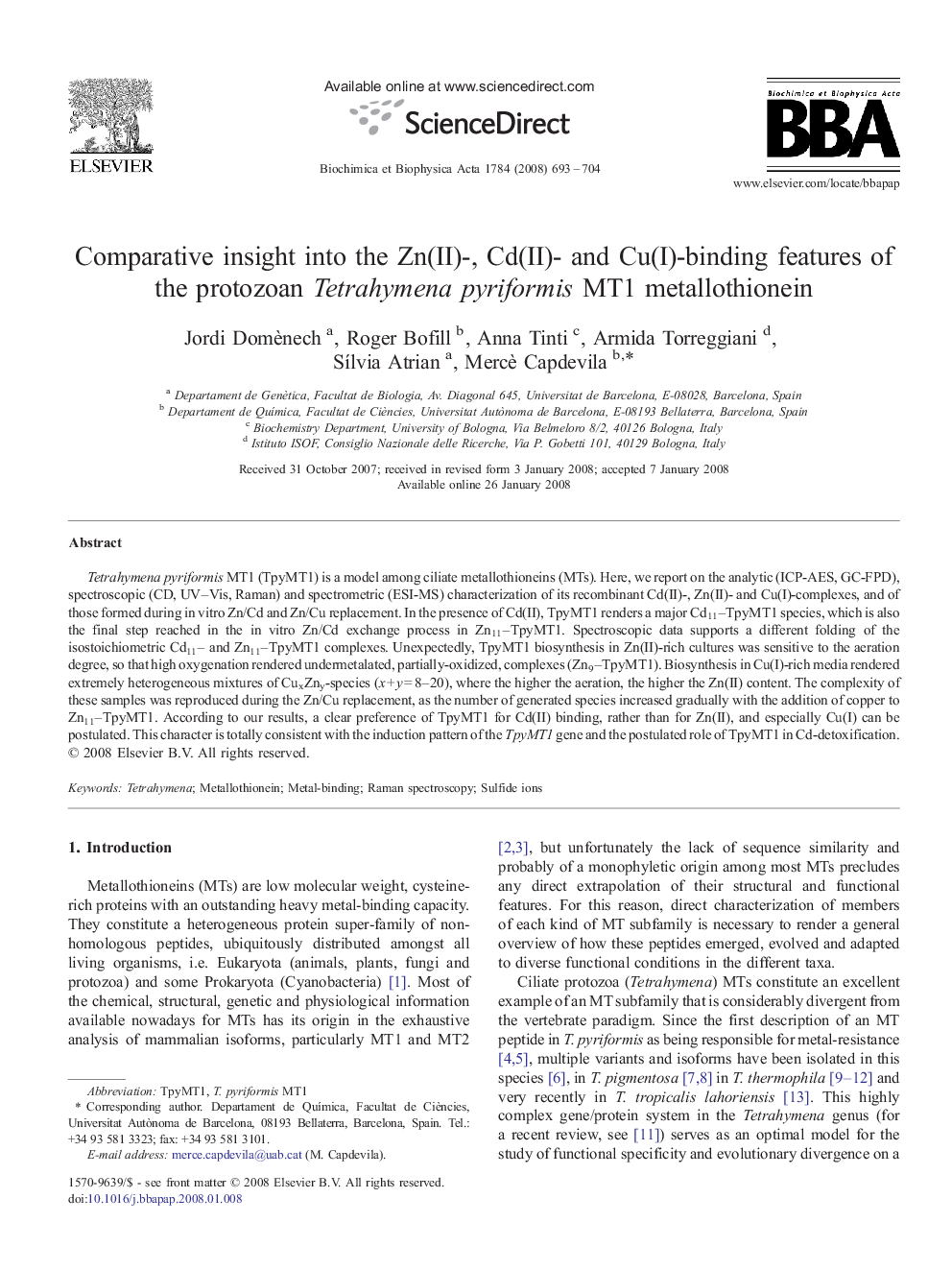| Article ID | Journal | Published Year | Pages | File Type |
|---|---|---|---|---|
| 1180591 | Biochimica et Biophysica Acta (BBA) - Proteins and Proteomics | 2008 | 12 Pages |
Tetrahymena pyriformis MT1 (TpyMT1) is a model among ciliate metallothioneins (MTs). Here, we report on the analytic (ICP-AES, GC-FPD), spectroscopic (CD, UV–Vis, Raman) and spectrometric (ESI-MS) characterization of its recombinant Cd(II)-, Zn(II)- and Cu(I)-complexes, and of those formed during in vitro Zn/Cd and Zn/Cu replacement. In the presence of Cd(II), TpyMT1 renders a major Cd11–TpyMT1 species, which is also the final step reached in the in vitro Zn/Cd exchange process in Zn11–TpyMT1. Spectroscopic data supports a different folding of the isostoichiometric Cd11– and Zn11–TpyMT1 complexes. Unexpectedly, TpyMT1 biosynthesis in Zn(II)-rich cultures was sensitive to the aeration degree, so that high oxygenation rendered undermetalated, partially-oxidized, complexes (Zn9–TpyMT1). Biosynthesis in Cu(I)-rich media rendered extremely heterogeneous mixtures of CuxZny-species (x + y = 8–20), where the higher the aeration, the higher the Zn(II) content. The complexity of these samples was reproduced during the Zn/Cu replacement, as the number of generated species increased gradually with the addition of copper to Zn11–TpyMT1. According to our results, a clear preference of TpyMT1 for Cd(II) binding, rather than for Zn(II), and especially Cu(I) can be postulated. This character is totally consistent with the induction pattern of the TpyMT1 gene and the postulated role of TpyMT1 in Cd-detoxification.
